Hyundai Kona vs Maserati Grecale – Performance, range & efficiency compared
Everyday use, family trips or long-distance drives – here’s where the differences show.
Discover whether Hyundai Kona or Maserati Grecale fits your lifestyle better.
Costs and Efficiency: When it comes to price and running costs, the biggest differences usually appear. This is often where you see which car fits your budget better in the long run.
Hyundai Kona has a significantly advantage in terms of price – it starts at 23100 £, while the Maserati Grecale costs 71500 £. That’s a price difference of around 48453 £.
Fuel consumption also shows a difference: Hyundai Kona manages with 4.60 L and is therefore decisively more efficient than the Maserati Grecale with 8.80 L. The difference is about 4.20 L per 100 km.
In terms of energy consumption, the advantage goes to the Hyundai Kona: with 14.60 kWh per 100 km, it’s convincingly more efficient than the Maserati Grecale with 23.90 kWh. That’s a difference of about 9.30 kWh.
As for range, the Hyundai Kona performs barely noticeable better – achieving up to 514 km, about 13 km more than the Maserati Grecale.
Engine and Performance: Power, torque and acceleration are the classic benchmarks for car enthusiasts – and here, some clear differences start to show.
When it comes to engine power, the Maserati Grecale has a significantly edge – offering 558 HP compared to 218 HP. That’s roughly 340 HP more horsepower.
In acceleration from 0 to 100 km/h, the Maserati Grecale is clearly quicker – completing the sprint in 3.80 s, while the Hyundai Kona takes 7.80 s. That’s about 4 s faster.
In terms of top speed, the Maserati Grecale performs noticeable better – reaching 285 km/h, while the Hyundai Kona tops out at 210 km/h. The difference is around 75 km/h.
There’s also a difference in torque: Maserati Grecale pulls convincingly stronger with 820 Nm compared to 265 Nm. That’s about 555 Nm difference.
Space and Everyday Use: Whether family car or daily driver – which one offers more room, flexibility and comfort?
Both vehicles offer seating for 5 people.
In curb weight, Hyundai Kona is distinct lighter – 1370 kg compared to 1870 kg. The difference is around 500 kg.
In terms of boot space, the Maserati Grecale offers somewhat more room – 535 L compared to 466 L. That’s a difference of about 69 L.
When it comes to payload, Maserati Grecale clearly perceptible takes the win – 690 kg compared to 490 kg. That’s a difference of about 200 kg.
Who wins the race?
The Maserati Grecale proves to be wins the duel decisively and therefore becomes our DriveDuel Champion!
Maserati Grecale is the better all-rounder in this comparison.
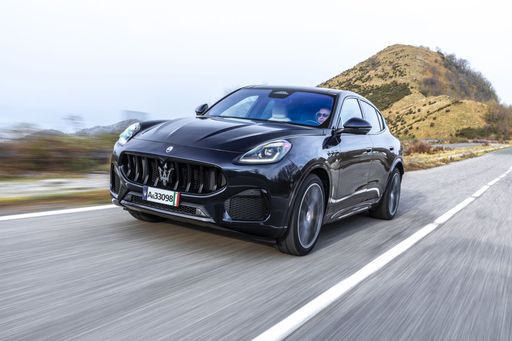
Maserati Grecale
Hyundai Kona
The Hyundai Kona blends a bold design with a versatile interior, making it a standout choice in the compact SUV market. Its crisp handling and responsive steering provide an engaging driving experience, whether in the city or on the open road. The vehicle also offers a range of features designed to enhance comfort and connectivity, ensuring a pleasurable journey for both driver and passengers.
details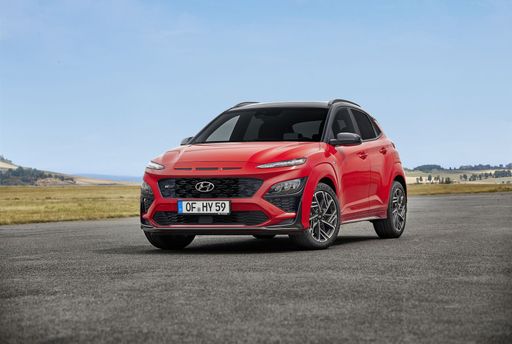 @ hyundai.news
@ hyundai.news
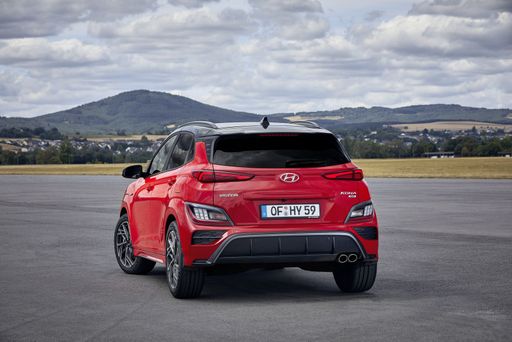 @ hyundai.news
@ hyundai.news
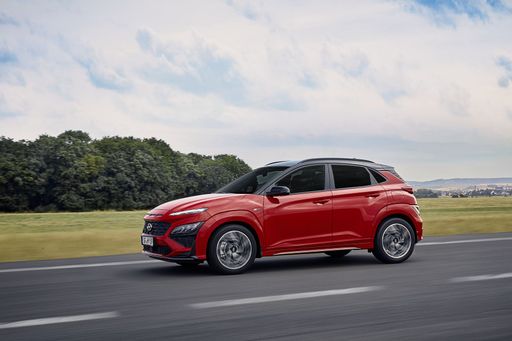 @ hyundai.news
@ hyundai.news
 @ hyundai.news
@ hyundai.news
Maserati Grecale
The Maserati Grecale elegantly combines luxury and performance, making it a standout choice in the SUV market. Its sophisticated design is complemented by a spacious interior that offers both comfort and high-end finishes. Advanced technology features ensure a driving experience that is as smooth as it is dynamic.
details @ media.maserati.com
@ media.maserati.com
 @ media.maserati.com
@ media.maserati.com
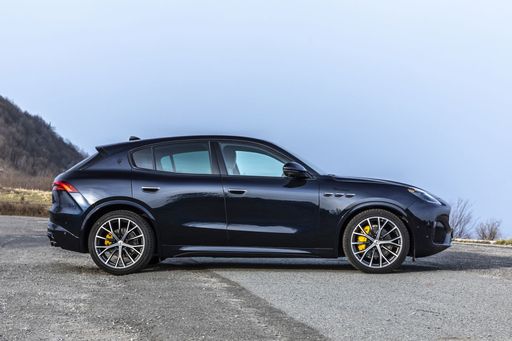 @ media.maserati.com
@ media.maserati.com
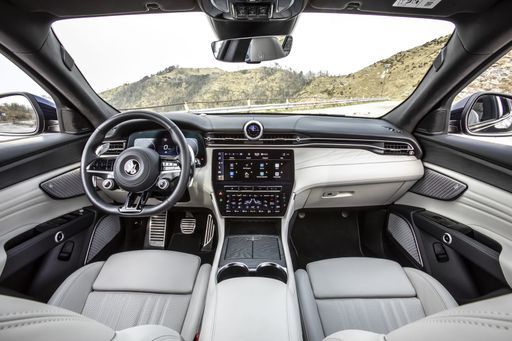 @ media.maserati.com
@ media.maserati.com

|

|
|
|
|
Costs and Consumption |
|
|---|---|
|
Price
23100 - 41600 £
|
Price
71500 - 107400 £
|
|
Consumption L/100km
4.6 - 7 L
|
Consumption L/100km
8.8 - 11.2 L
|
|
Consumption kWh/100km
14.6 - 16.8 kWh
|
Consumption kWh/100km
23.90 kWh
|
|
Electric Range
377 - 514 km
|
Electric Range
501 km
|
|
Battery Capacity
1.3 - 65.4 kWh
|
Battery Capacity
98 kWh
|
|
co2
0 - 163 g/km
|
co2
0 - 254 g/km
|
|
Fuel tank capacity
38 - 47 L
|
Fuel tank capacity
64 L
|
Dimensions and Body |
|
|---|---|
|
Body Type
SUV
|
Body Type
SUV
|
|
Seats
5
|
Seats
5
|
|
Doors
5
|
Doors
4
|
|
Curb weight
1370 - 1773 kg
|
Curb weight
1870 - 2480 kg
|
|
Trunk capacity
466 L
|
Trunk capacity
535 L
|
|
Length
4350 - 4385 mm
|
Length
4846 - 4865 mm
|
|
Width
1825 mm
|
Width
1948 - 1979 mm
|
|
Height
1580 - 1585 mm
|
Height
1651 - 1670 mm
|
|
Max trunk capacity
1300 L
|
Max trunk capacity
-
|
|
Payload
420 - 490 kg
|
Payload
630 - 690 kg
|
Engine and Performance |
|
|---|---|
|
Engine Type
Electric, Petrol, Full Hybrid
|
Engine Type
Electric, Petrol MHEV, Petrol
|
|
Transmission
Automatic, Manuel
|
Transmission
Automatic
|
|
Transmission Detail
Manual Gearbox, Dual-Clutch Automatic
|
Transmission Detail
Reduction Gearbox, Automatic Gearbox
|
|
Drive Type
Front-Wheel Drive, All-Wheel Drive
|
Drive Type
All-Wheel Drive
|
|
Power HP
115 - 218 HP
|
Power HP
301 - 558 HP
|
|
Acceleration 0-100km/h
7.8 - 11.9 s
|
Acceleration 0-100km/h
3.8 - 5.6 s
|
|
Max Speed
162 - 210 km/h
|
Max Speed
220 - 285 km/h
|
|
Torque
200 - 265 Nm
|
Torque
450 - 820 Nm
|
|
Number of Cylinders
3 - 4
|
Number of Cylinders
4 - 6
|
|
Power kW
85 - 160 kW
|
Power kW
221 - 410 kW
|
|
Engine capacity
998 - 1598 cm3
|
Engine capacity
1995 - 3000 cm3
|
General |
|
|---|---|
|
Model Year
2024 - 2025
|
Model Year
2024 - 2025
|
|
CO2 Efficiency Class
A, D, C, E, F
|
CO2 Efficiency Class
A, G
|
|
Brand
Hyundai
|
Brand
Maserati
|
Is the Hyundai Kona offered with different drivetrains?
Available configurations include Front-Wheel Drive or All-Wheel Drive.
The prices and data displayed are estimates based on German list prices and may vary by country. This information is not legally binding.
